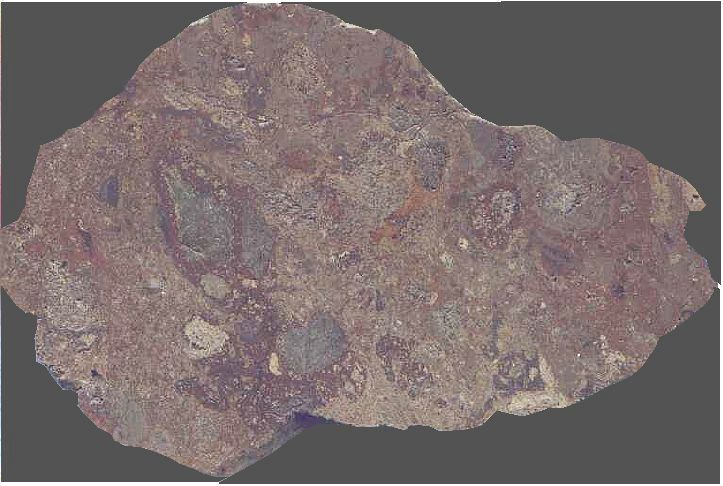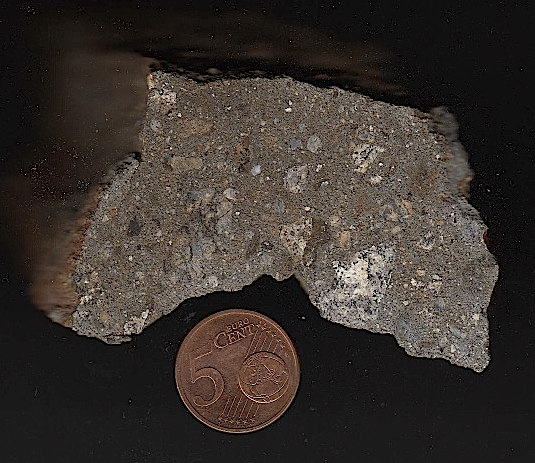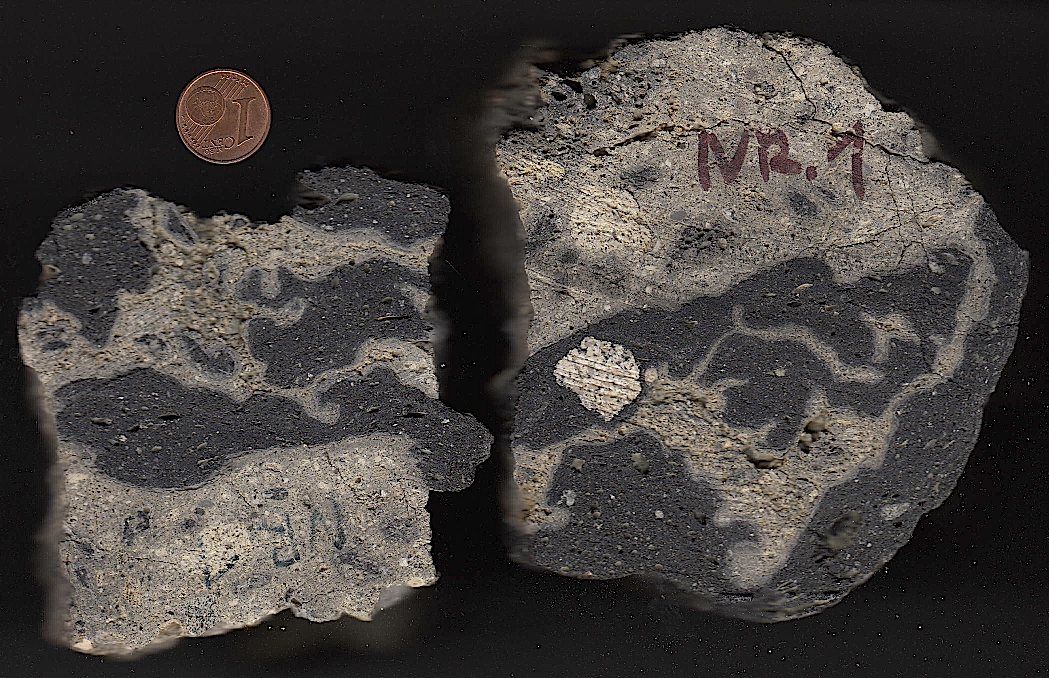Wanapitei (Canada) suevite
Fig. 1. Suevite, Wanapitei (Canada) impact structure. Red variety.
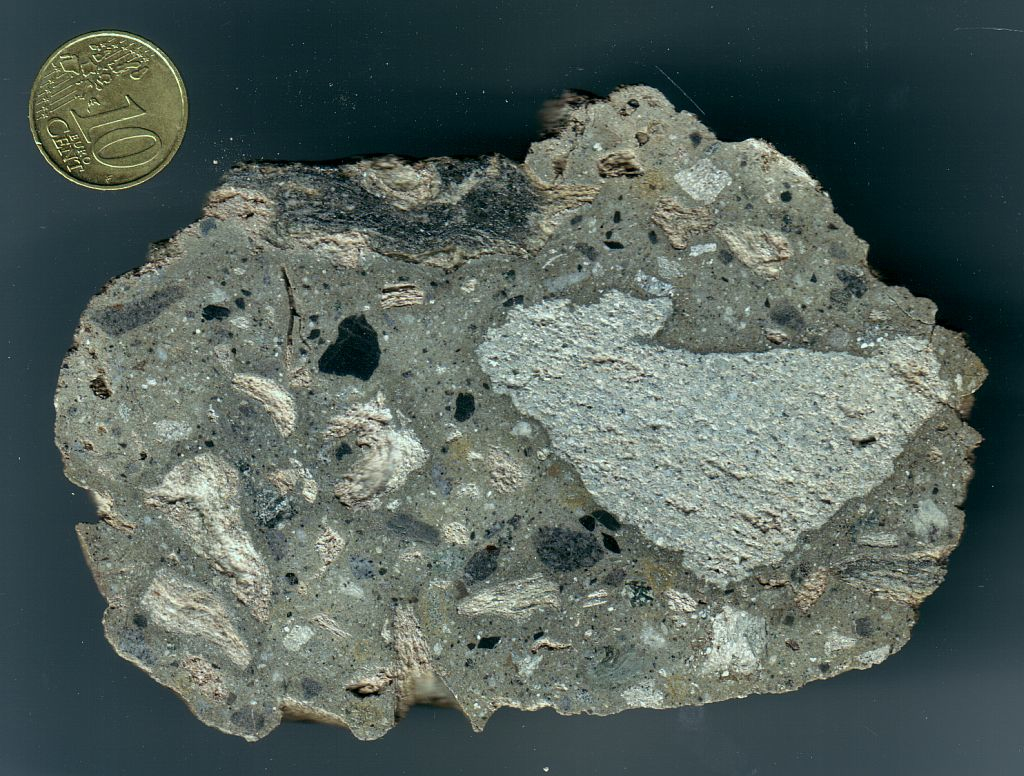 Fig. 2. Suevite, Wanapitei (Canada) impact structure. Grayish variety. The Wanapitei suevites do not occur in outcrops but are found as erratic blocks only.
Fig. 2. Suevite, Wanapitei (Canada) impact structure. Grayish variety. The Wanapitei suevites do not occur in outcrops but are found as erratic blocks only.
Scandinavian suevites
Lake Mien (Sweden) suevite
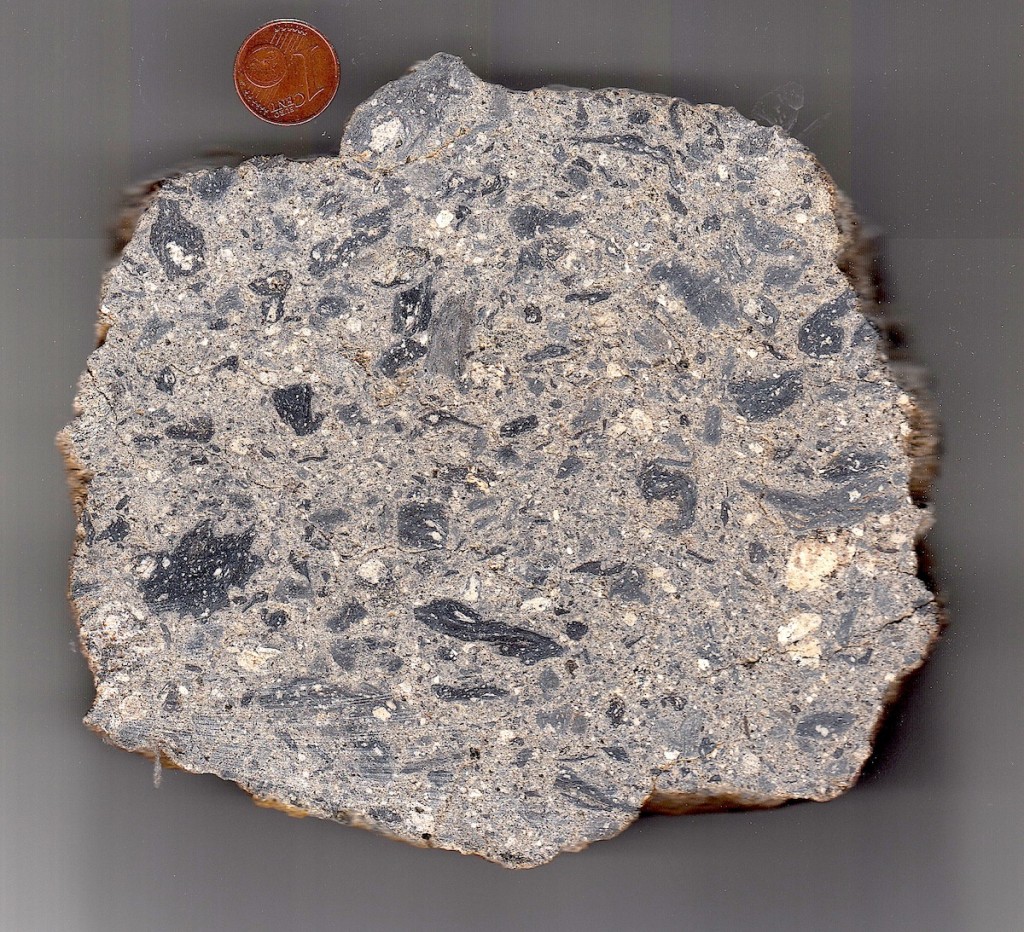 Fig. 3. Suevite, Lake Mien (Sweden) impact structure. Lake Mien suevites, like the Wanapitei suevites, are occurring in the form of glacial erratic blocks only.
Fig. 3. Suevite, Lake Mien (Sweden) impact structure. Lake Mien suevites, like the Wanapitei suevites, are occurring in the form of glacial erratic blocks only.
Lappajärvi (Finland) suevite
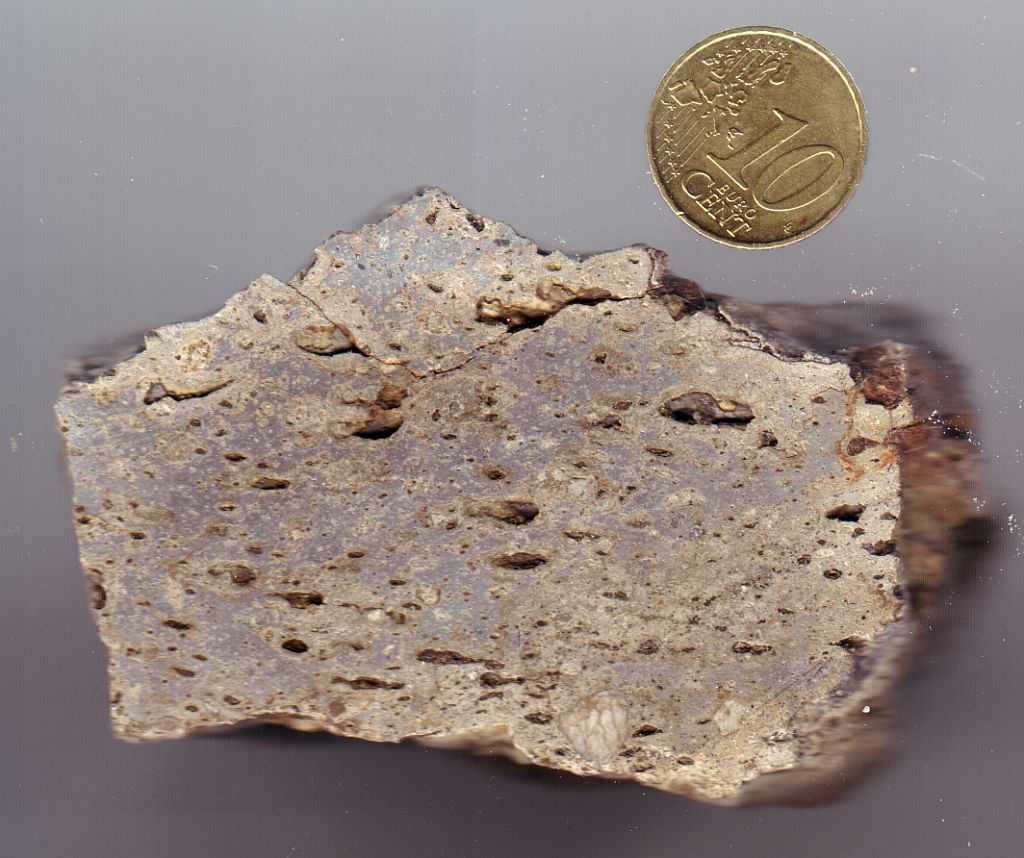 Fig. 4. Suevite, Lappajärvi (Finland) impact structure.
Fig. 4. Suevite, Lappajärvi (Finland) impact structure.
Sääksjärvi (Finland) suevite
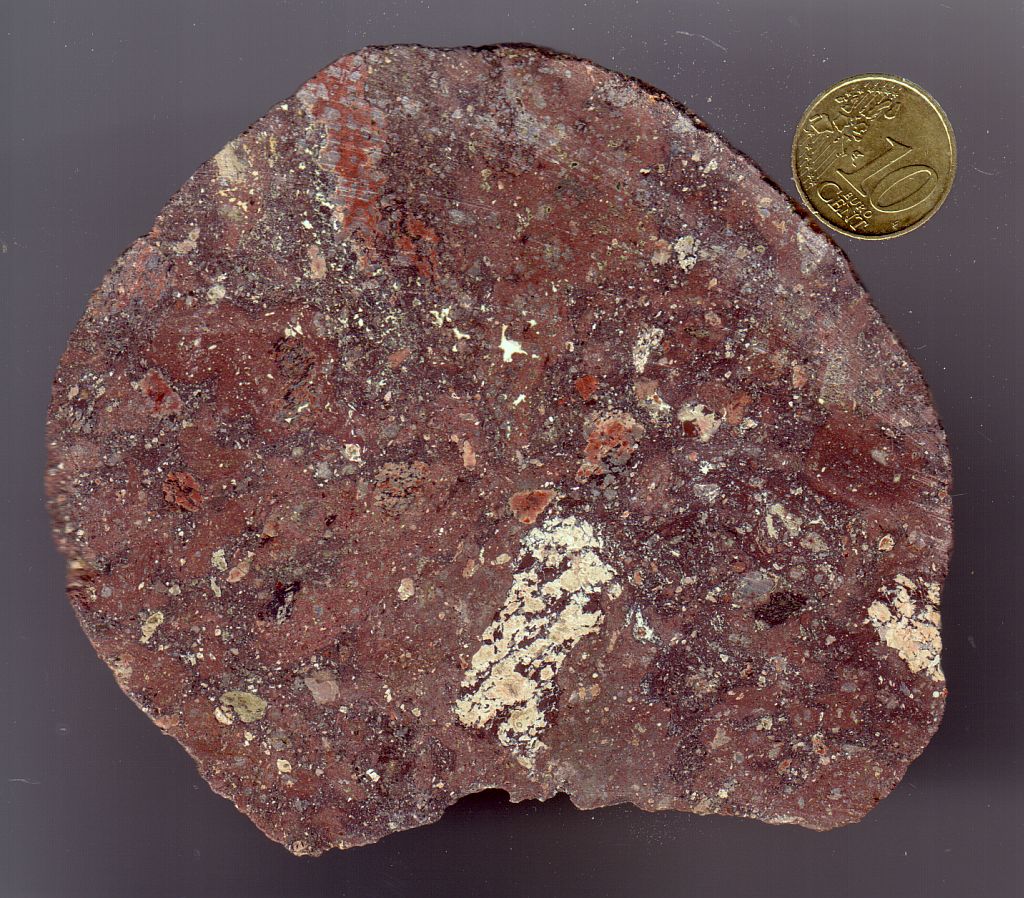 Fig. 5. Suevite, Sääksjärvi (Finland) impact structure.
Fig. 5. Suevite, Sääksjärvi (Finland) impact structure.
Dellen (Sweden) suevite
Fig. 6. Suevite, Dellen (Sweden) impact structure. Also the Dellen suevite is found as boulders only.
Siljan (Sweden) suevites
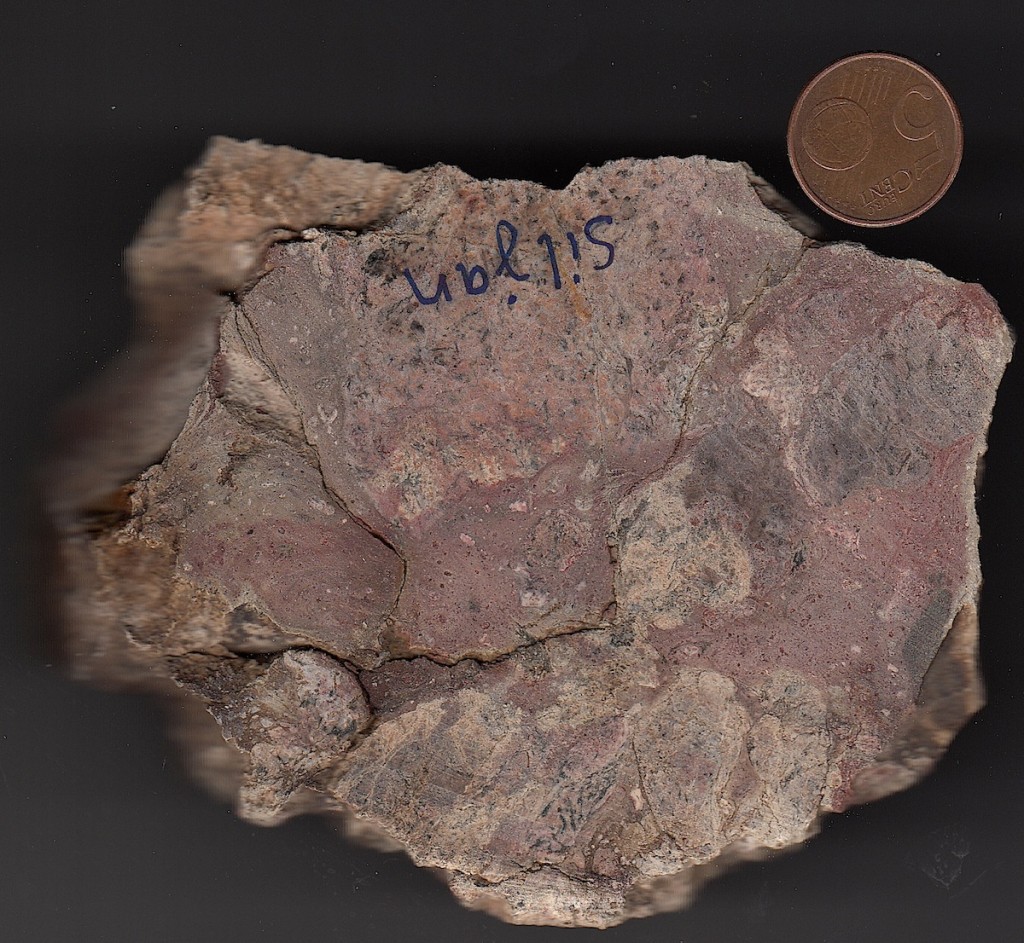 Fig. 7. Suevite, Siljan ring impact structure, Sweden.
Fig. 7. Suevite, Siljan ring impact structure, Sweden.
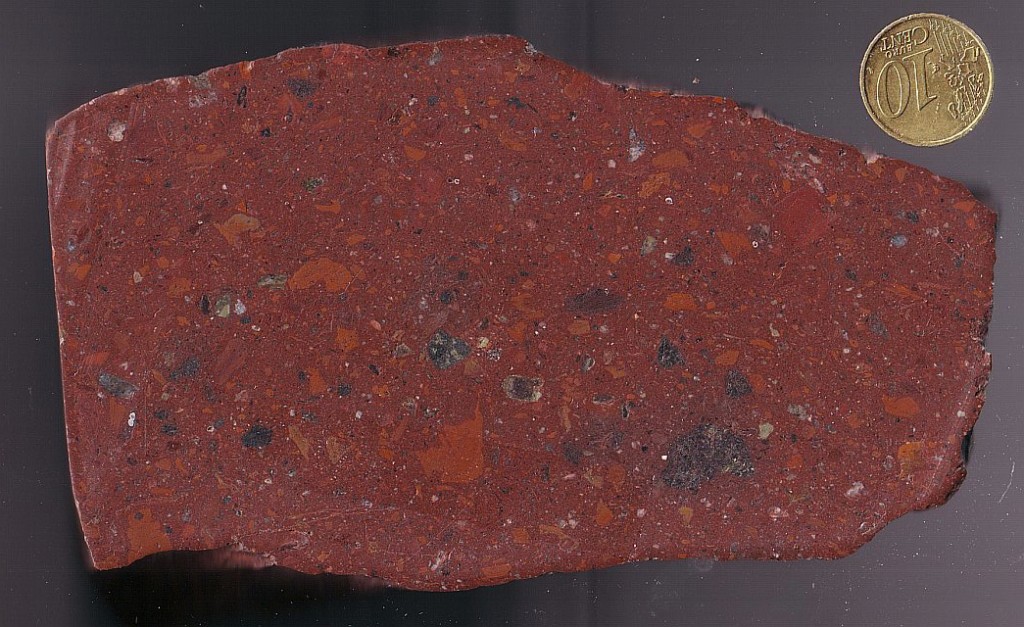 Fig. 8. Suevite(?) breccia, Siljan (Sweden) impact structure. Possibly this sample is rather an impact melt rock by definition. Sample courtesy Jan-Olov Svedlund.
Fig. 8. Suevite(?) breccia, Siljan (Sweden) impact structure. Possibly this sample is rather an impact melt rock by definition. Sample courtesy Jan-Olov Svedlund.
Kara (Russia) suevite
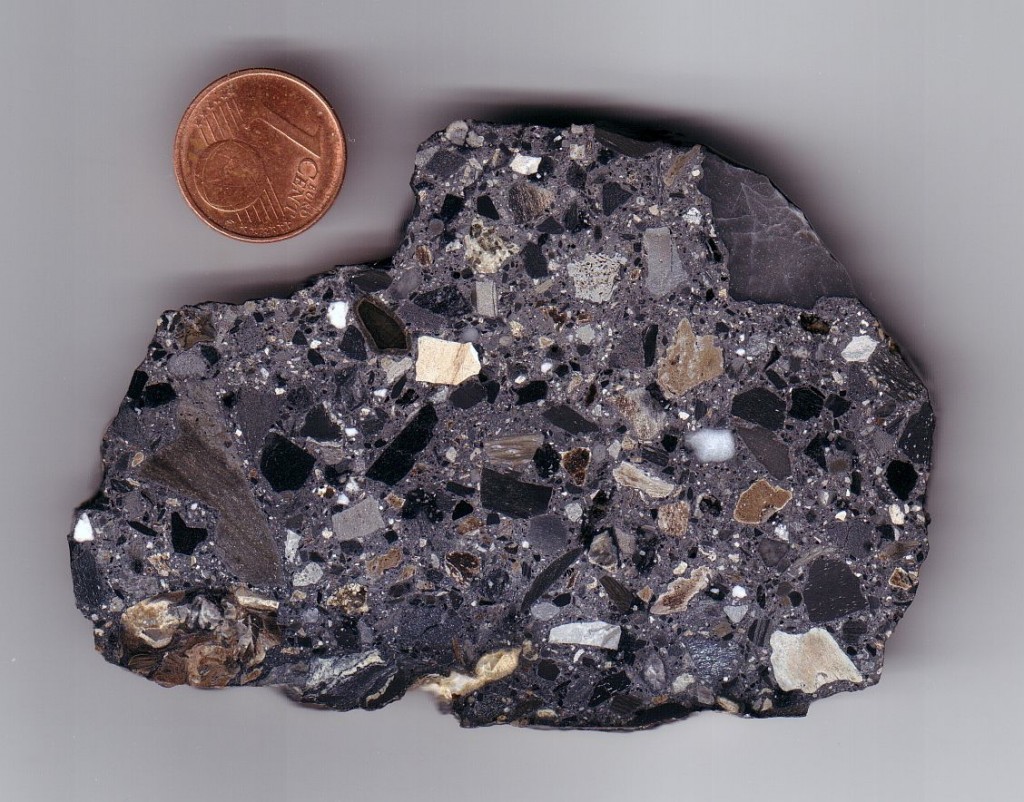 Fig. 9. Suevite, Kara (Russia) impact structure.
Fig. 9. Suevite, Kara (Russia) impact structure.
Rochechouart (France) suevites
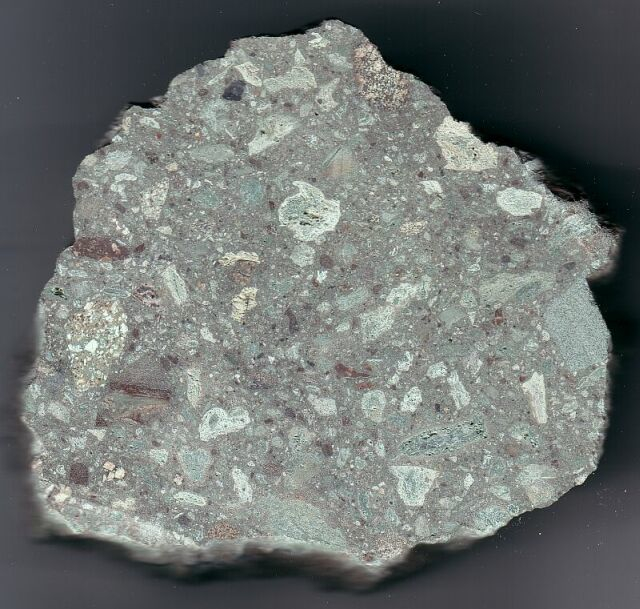 Fig. 10. Suevite, Rochechouart (France) impact structure; Chassenon green variety. The greenish suevite is exposed in the environs of the village of Chassenon. Here, major parts of a Gallic-Roman site (Cassinomagus) have been constructed (Fig. 11) using the suevite breccias from several ancient quarries.
Fig. 10. Suevite, Rochechouart (France) impact structure; Chassenon green variety. The greenish suevite is exposed in the environs of the village of Chassenon. Here, major parts of a Gallic-Roman site (Cassinomagus) have been constructed (Fig. 11) using the suevite breccias from several ancient quarries.
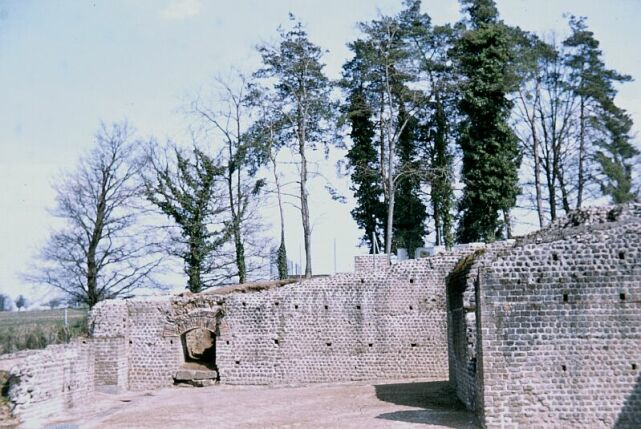 Fig. 11. The Gallic-Roman site of Cassinomagus (some 25 years ago).
Fig. 11. The Gallic-Roman site of Cassinomagus (some 25 years ago).
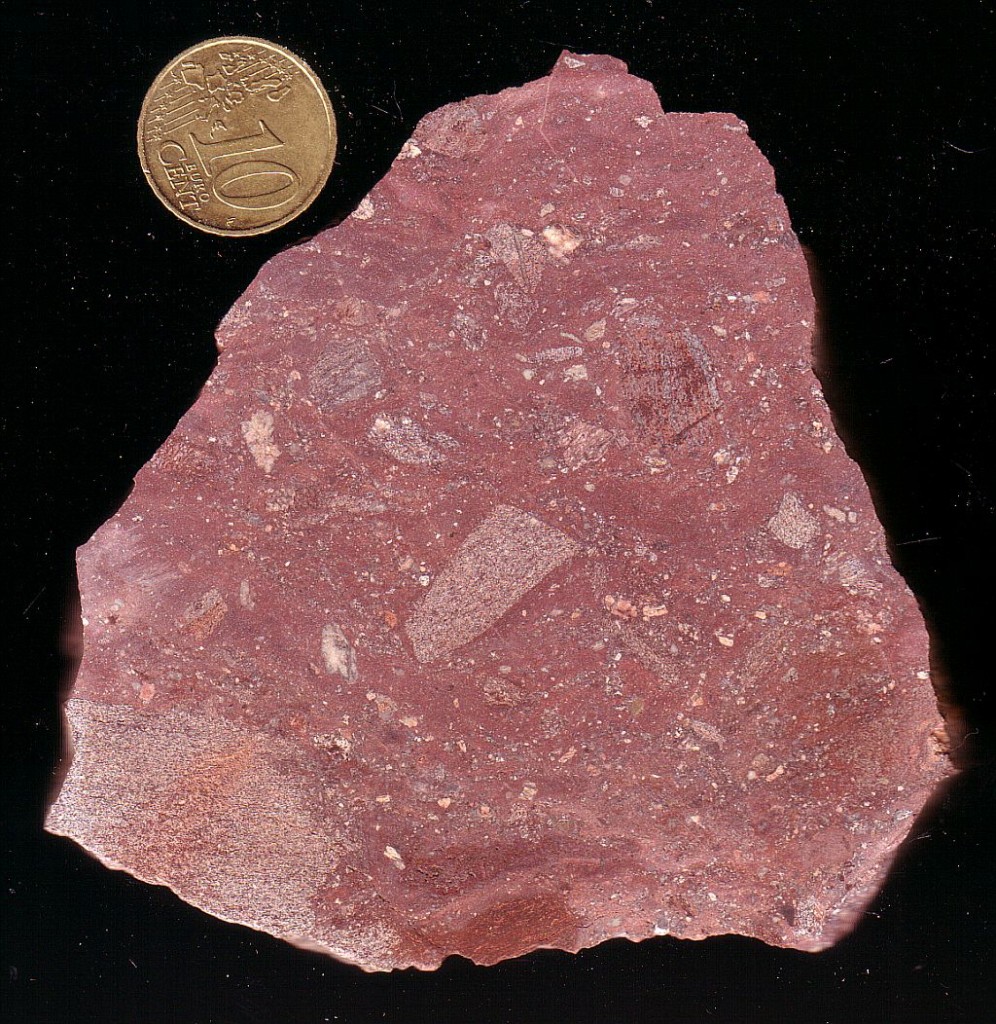 Fig. 12. Suevite, Rochechouart (France) impact structure; Montoume red variety.
Fig. 12. Suevite, Rochechouart (France) impact structure; Montoume red variety.
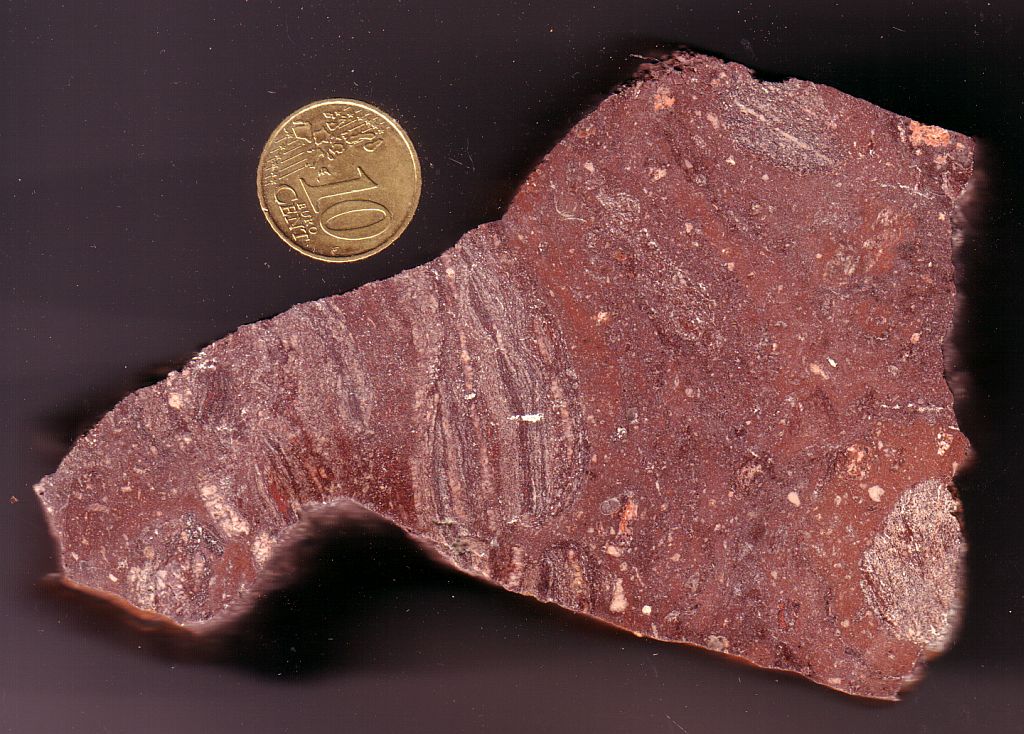 Fig. 13. Suevite, Rochechouart (France) impact structure; Montoume red variety.
Fig. 13. Suevite, Rochechouart (France) impact structure; Montoume red variety.
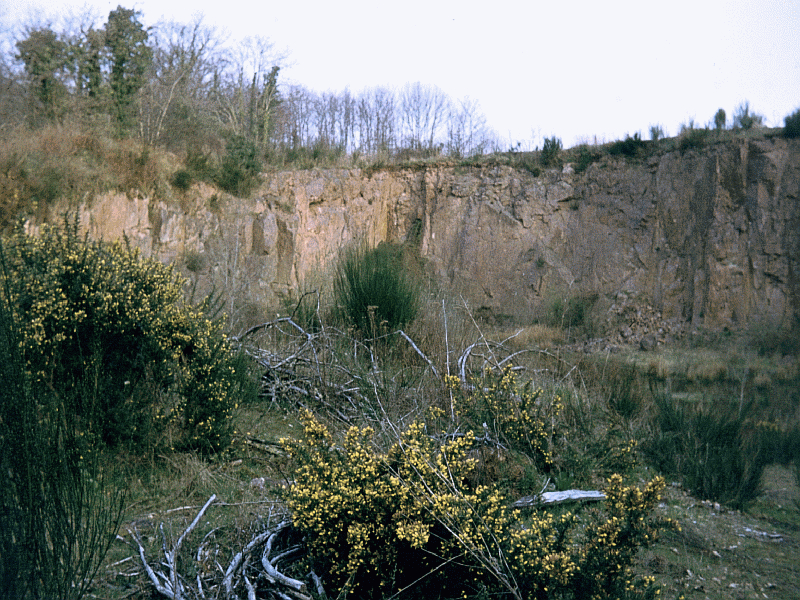 Fig. 14. The disused Montoume suevite quarry some 25 years ago.
Fig. 14. The disused Montoume suevite quarry some 25 years ago.
Ries crater (Germany) suevites
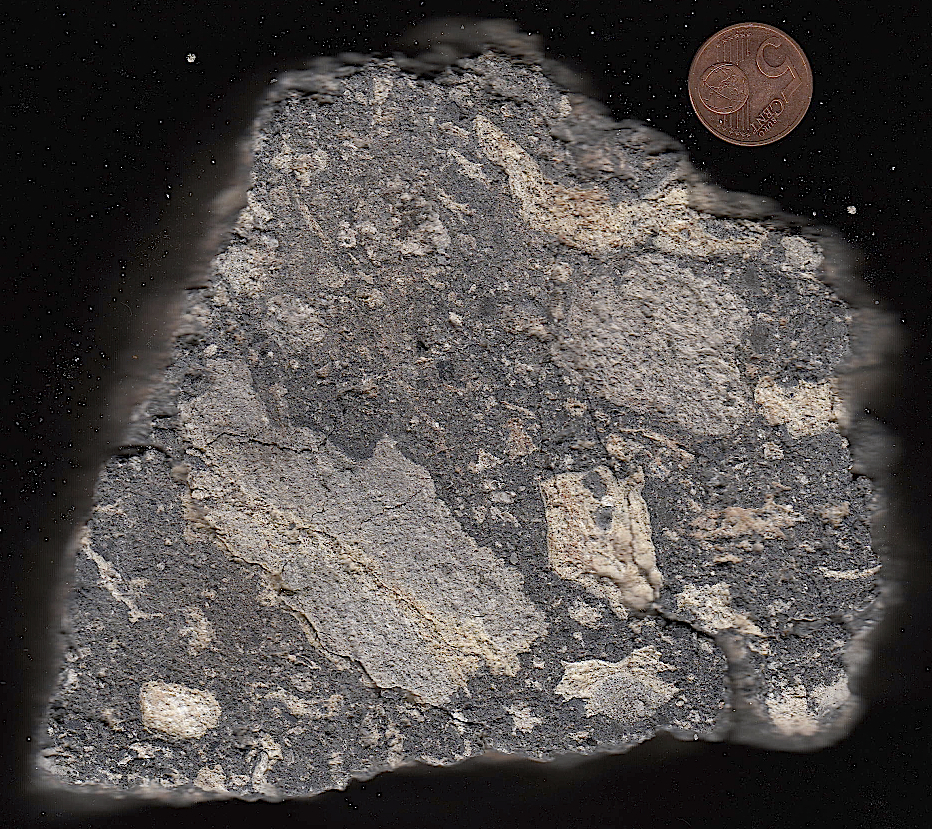 Fig. 15. Suevite, Ries (Germany) impact structure. Aumühle quarry.
Fig. 15. Suevite, Ries (Germany) impact structure. Aumühle quarry.
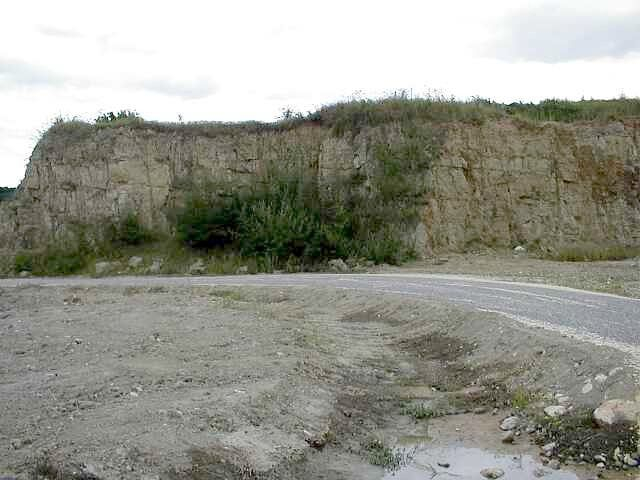 Fig. 16. Massive suevite in the Aumühle quarry, Ries (Germany) impact structure. The Aumühle suevite is exploited for the making of a special cement. In ancient centuries, the Ries suevite was a highly esteemed building stone which over time has strongly suffered from weathering, however.
Fig. 16. Massive suevite in the Aumühle quarry, Ries (Germany) impact structure. The Aumühle suevite is exploited for the making of a special cement. In ancient centuries, the Ries suevite was a highly esteemed building stone which over time has strongly suffered from weathering, however.
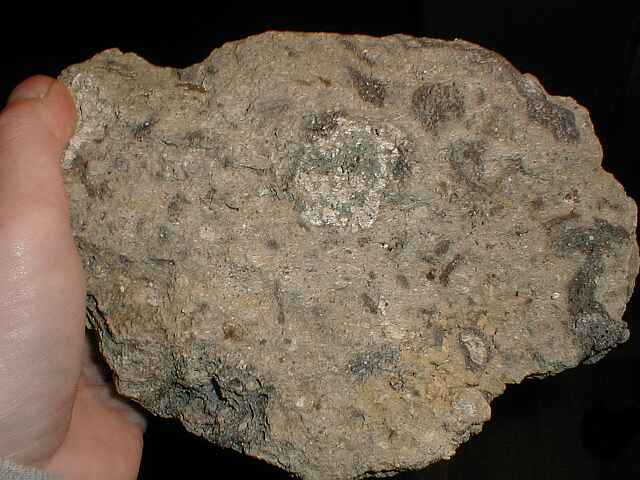 Fig. 17. Suevite, Ries (Germany) impact structure; from disused Otting quarry. Note the dark melt clasts and the light, strongly shocked clast from the crystalline basement.
Fig. 17. Suevite, Ries (Germany) impact structure; from disused Otting quarry. Note the dark melt clasts and the light, strongly shocked clast from the crystalline basement.
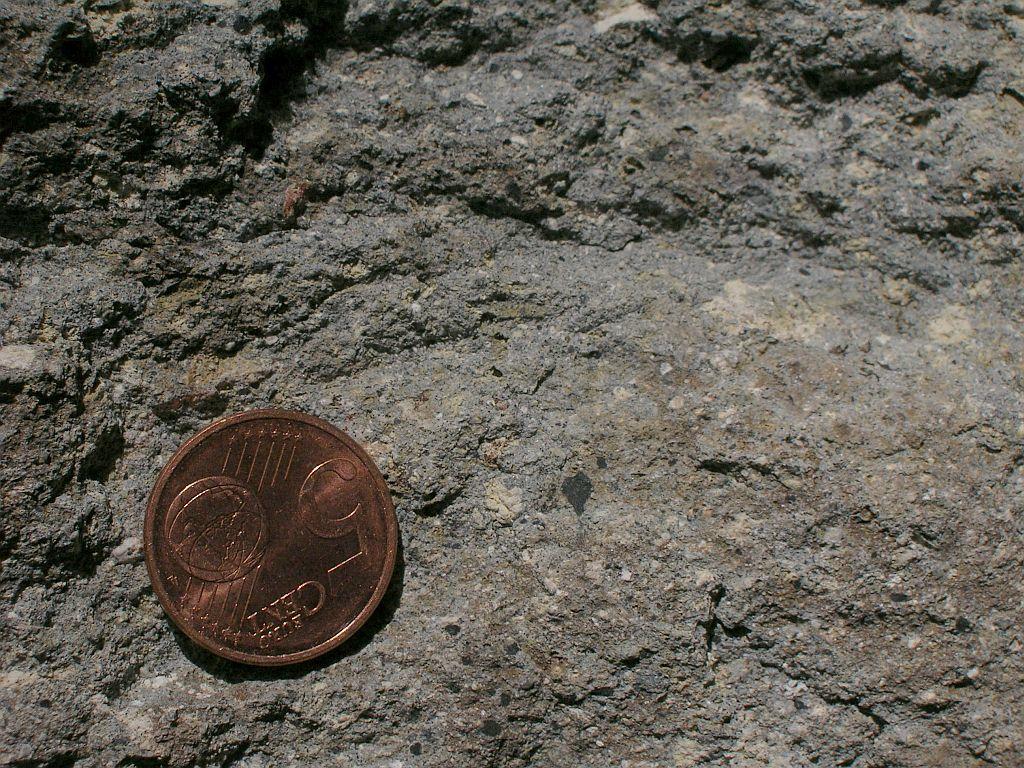 Fig. 18. Suevite, Ries (Germany) impact structure; Zipplingen variety. Due to the mixed, sedimentary/crystalline target of the Ries crater, the suevites in part show notably varying composition. The Zipplingen suevite shown here is especially rich in sedimentary clasts.
Fig. 18. Suevite, Ries (Germany) impact structure; Zipplingen variety. Due to the mixed, sedimentary/crystalline target of the Ries crater, the suevites in part show notably varying composition. The Zipplingen suevite shown here is especially rich in sedimentary clasts.
Fig. 18-1. Suevite, Ries crater; cut face exhibiting black melt glass inclusions (“glass bombs”). The whitish particle in the right-hand specimen glass bomb is a gneiss fragment.
Unknown impact (Canada), erratic suevite boulder
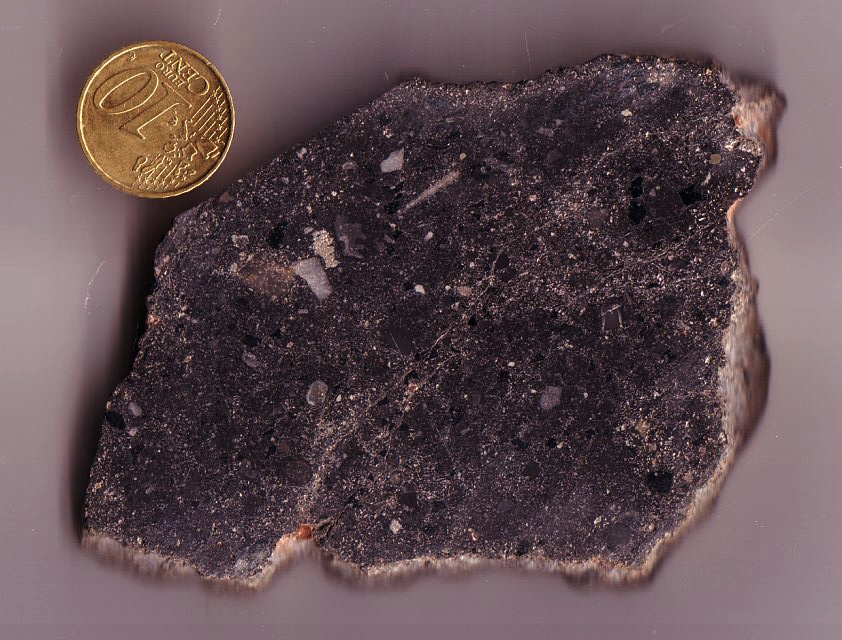 Fig. 19. Suevite slice cut from a boulder that was found in Canada roughly 250 km east of the Sudbury impact structure. Making a relation to a specific impact structure remains to be done. Photomicrographs of the shocked rock (with indication of a mixed, sedimentary/crystalline, target) are shown in Figs. 20 – 22. Sample courtesy Robert Szep.
Fig. 19. Suevite slice cut from a boulder that was found in Canada roughly 250 km east of the Sudbury impact structure. Making a relation to a specific impact structure remains to be done. Photomicrographs of the shocked rock (with indication of a mixed, sedimentary/crystalline, target) are shown in Figs. 20 – 22. Sample courtesy Robert Szep.
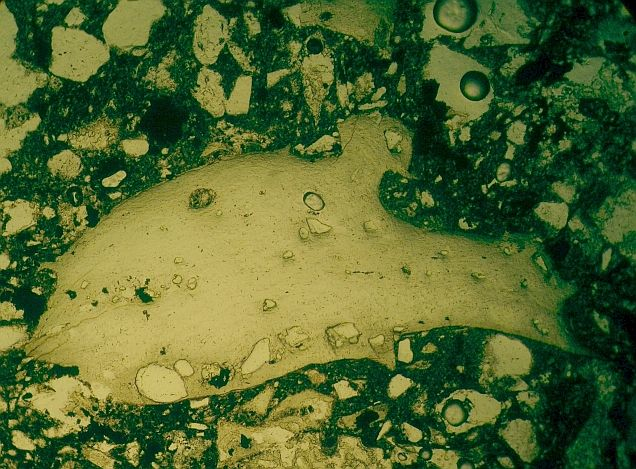 Fig. 20. Suevite from Fig. 19; glass particle; plane light.
Fig. 20. Suevite from Fig. 19; glass particle; plane light.

Fig. 21. Suevite from Fig. 19; quartz grain displaying three sets of decorated planar deformation features (PDFs); xx polarizers.
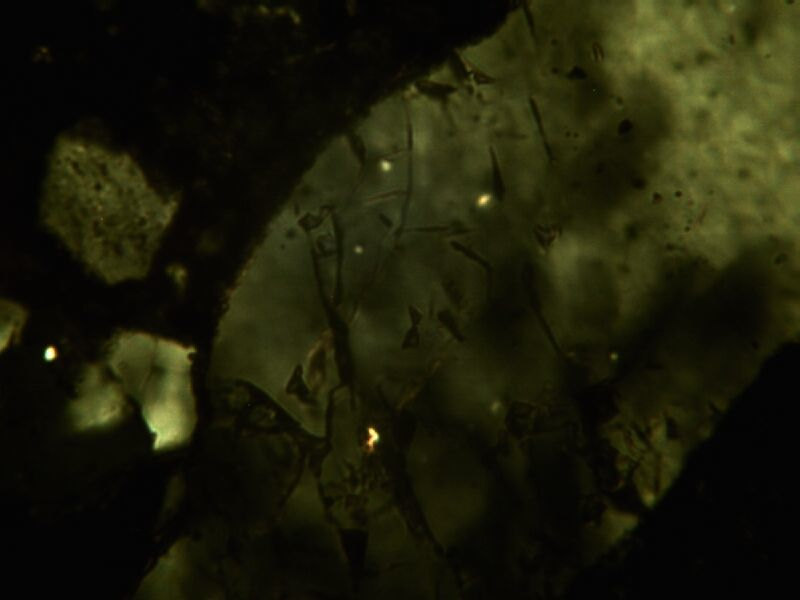 Fig. 22. Suevite from Fig. 18; diaplectic quartz crystal, xx polarizers. Field width in Figs. 20- 22 c. 100 µm.
Fig. 22. Suevite from Fig. 18; diaplectic quartz crystal, xx polarizers. Field width in Figs. 20- 22 c. 100 µm.







































































